|
Dry
Beans > Year-Round IPM Program > Harvest > Damage
to Plants
Dry Beans
Pests and their Damage—Harvest
On this page
- Armyworm
- Corn earworm
- Lygus bug
- Weevil
|
- Nightshade
- Common bacterial blight
- Bean anthracnose
|
|
Monitor pod and seed damage at harvest to identify pests that
escaped your management program. Look for the presence or any
evidence of armyworms, stink bugs, lygus bugs, and diseases.
Keep a record of problems that you observe. Knowledge
of the current year's problems will help you plan for next year’s
practices.
Use the photos below to distinguish symptoms due to various diseases,
insects, or abiotic factors. Names link to more on
identification and management or biology.
Click on photos to enlarge
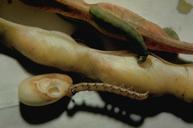
Armyworm and corn
earworm larvae and damage
Identification
tip: Larvae chew holes in pods and beans.
|
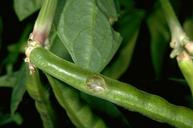
Armyworm damage
Identification tip: Chew holes in pods and beans. |
|
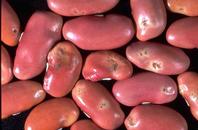
Lygus bug damage
Identification tip: Pitting and distortions on
red beans.
|
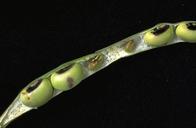
Lygus bug damage
Identification tip: Blemishes and stunted seeds.
|
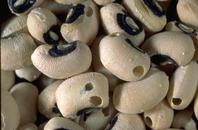
Weevil damage
Identification tip: Chew holes in stored beans.
|
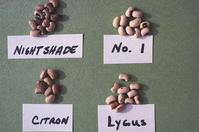
Nightshade berry
staining
Identification tip: Nightshade berry juice stains
bean seeds and causes debris to stick.
|
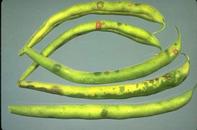
Common bacterial blight damage
Identification tip: Pods with dark irregular spots.
|
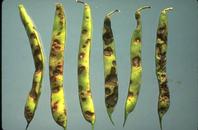
Bean anthracnose damage
Identification tip: Sunken cankers on pods.
|
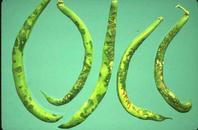
Halo blight damage
Identification tip: Sunken spots on pods.
|
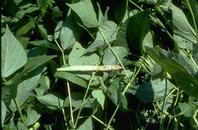
White mold
Identification tip: Bleached or tan colored pods. |
|
Top of page
|


